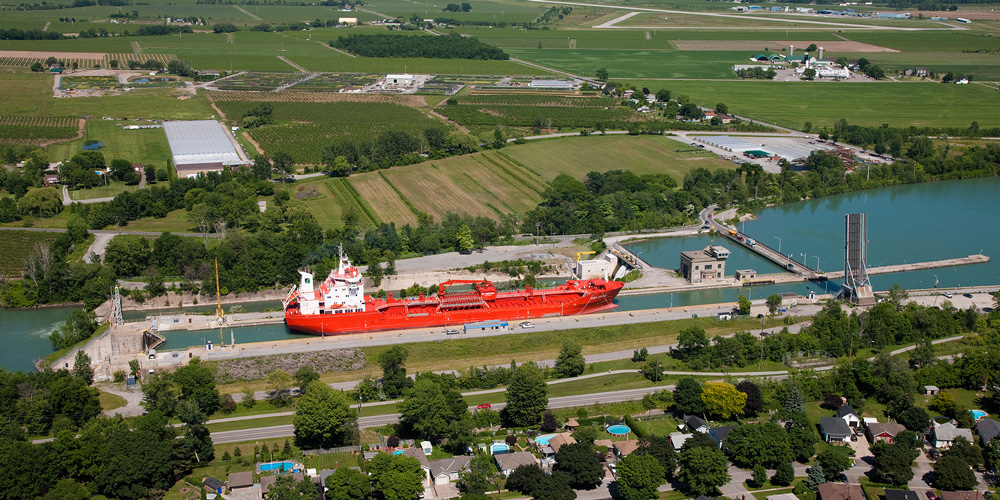Seaway Opening Slated for March 22nd
March 7, 2008
Cornwall, Ontario (March 7, 2008) – The St. Lawrence Seaway Management Corporation (SLSMC) has announced March 22nd as the opening day for the Seaway in this, its 50th navigation season. The Welland Canal will open on March 20th, tying a record established in 2007 for the earliest opening date.
“Our system’s official 50th anniversary will take place next year, a the Seaway was commissioned in 1959″ noted Richard Corfe, President and CEO of the SLSMC. The latest agreement with Transport Canada includes $270 million for the refurbishment of the system over the next five years. “This investment recognizes the Seaway’s vital contribution to our economy and quality of life. Marine transportation remains by far the most energy efficient means of transporting cargo, a fact not lost in an age of $100 per barrel oil” said Corfe.
Looking ahead to the next 50 years, the SLSMC has initiated a number of strategies to maximize the use of the existing locks and channels. These strategies include a revised tariff of tolls, which will remain frozen until at least 2011, coupled with various incentives and volume discounts designed to attract new business to the system.
“This shipping season promises new milestones in environmental protection, economic activity and renewed investment in one of the world’s most significant maritime shipping networks,” said Collister (“Terry”) Johnson, Jr., Administrator of the U.S. Saint Lawrence Seaway Development Corporation. “New ballast water standards will better protect our vital marine habitats, new traffic in high-demand products like wind turbines will increase shipping volumes, and record infrastructure funding requests will bring new promise to countless communities that profit from Great Lakes shipping.”
The bi-national Great Lakes St. Lawrence Seaway Study, completed in 2007, cites a number of key attributes that the Seaway offers as an asset that will continue to pay dividends for years to come. Providing a cost effective and sustainable means of transporting goods, the system complements existing intermodal networks. The study points out that opportunities exist to utilize the present locks and channels to alleviate congestion on road and rail arteries.
Since its inception in 1959, over 2.3 billion tonnes valued in excess of $350 billion has been transported via the Seaway. For more information concerning the Seaway, and insight into its future, please visit www.greatlakes-seaway.com






